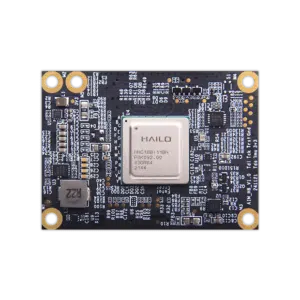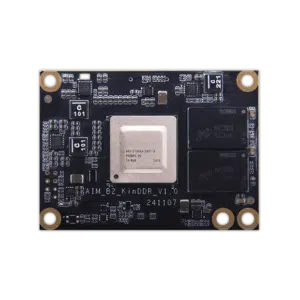The Role of Side AI Products in Real-Time Analytics
The Role of Side AI Products in Real-Time Analytics
Blog Article
Exploring the Advantages of Edge AI Devices
Exploring the Benefits of Edge AI Units
Synthetic intelligence (AI) has reshaped several facets of our lives, and their request at the side is creating dunes in the tech industry. arm edge ai which involves deploying AI versions on products like detectors, cameras, and smartphones, has surfaced as a revolutionary way of handling knowledge and executing tasks. Unlike cloud-reliant AI techniques, side AI runs closer to where in fact the knowledge is generated. This shift provides a bunch of advantages, placing side AI as a casino game changer in areas which range from healthcare to retail to commercial automation.

Here, we'll explore some of the key benefits of side AI units and how they are shaping the future.
Faster Running and Real-Time Answers
One of the most substantial advantages of side AI is their capability to process data locally on the unit, rather than counting on a distant cloud server. The result? Faster control speeds and real-time responses. Like, in autonomous vehicles wherever every millisecond counts, side AI can analyze environmental knowledge quickly to create conclusions, such as braking or steering adjustments, minus the latency related to cloud communication.
Based on new statistics, side AI units can reduce decision-making latency by up to 75% in comparison to cloud-dependent solutions. That makes them ideal for time-sensitive purposes, such as video analytics in security or wise production systems.
Increased Knowledge Solitude and Safety
Solitude and knowledge protection are growing problems in a very linked electronic world. Since side AI handles information running locally, sensitive and painful information doesn't have to happen to be a cloud machine, reducing the danger of interception or breaches. This local approach allows companies more control over their knowledge and ensures submission with solitude regulations, specially in industries like healthcare and finance.
The raising ownership of they is basically pushed by privacy-conscious policies and a preference for on-device computation. Reports suggest that by 2025, significantly more than 50% of AI-generated information is likely to be processed at the edge to ensure larger data security.
Paid off Dependence on Net Connectivity
Cloud-based AI purposes count greatly on secure internet connection to work effectively. edge computing platform, on the other hand, prosper in situations wherever connection might be unreliable or unavailable. Since edge AI functions information entirely on the device, it can work effortlessly without the necessity for constant use of a network.
For example, in distant agricultural options, edge AI units may analyze weather patterns, land conditions, and plant knowledge in realtime to aid with predictive farming, even when disconnected from the internet. It's projected that edge research may reduce knowledge transfer costs by up to 70%, making it more cheaply viable in parts with limited bandwidth.
Energy Performance and Decrease Charges
Edge AI devices are designed to enhance power consumption. By control information on-device, they reduce the necessity to deliver substantial datasets to cloud hosts, cutting down both bandwidth use and energy costs. This makes an important huge difference, particularly in sectors wherever energy performance is a important factor.
Corporations deploying side AI often experience paid down working fees because they prevent the repeating expenses related to high-volume cloud storage and knowledge transmission. Moreover, edge AI's low-power electronics ensures products can perform complicated computations without wearing methods, making it a sustainable choice for IoT (Internet of Things) ecosystems.
Tailored AI Answers for Unique Use Instances

Another significant benefit of edge AI is its power to deliver tailored alternatives for unique scenarios. Unlike common cloud-based AI models, edge AI techniques could be fine-tuned to improve performance for certain applications. As an example, edge AI products utilized in retail options can provide individualized tips and easy checkout experiences. Equally, in industrial automation, they could monitor gear performance and estimate preservation wants with high precision.
This adaptability has resulted in an projected 30% development in edge AI deployments before year, highlighting its price in providing targeted alternatives across varied industries.
Operating Advancement with Edge AI
Edge AI devices have reached the lead of development, providing unparalleled rate, privacy, and efficiency. By allowing real-time decisions, safeguarding sensitive knowledge, minimizing dependence on connectivity, and marketing power savings, they offer a smart, scalable answer for a number of applications. Furthermore, as technology developments, the integration of edge AI is likely to accelerate, unlocking new possibilities and redefining how firms control AI.
Report this page